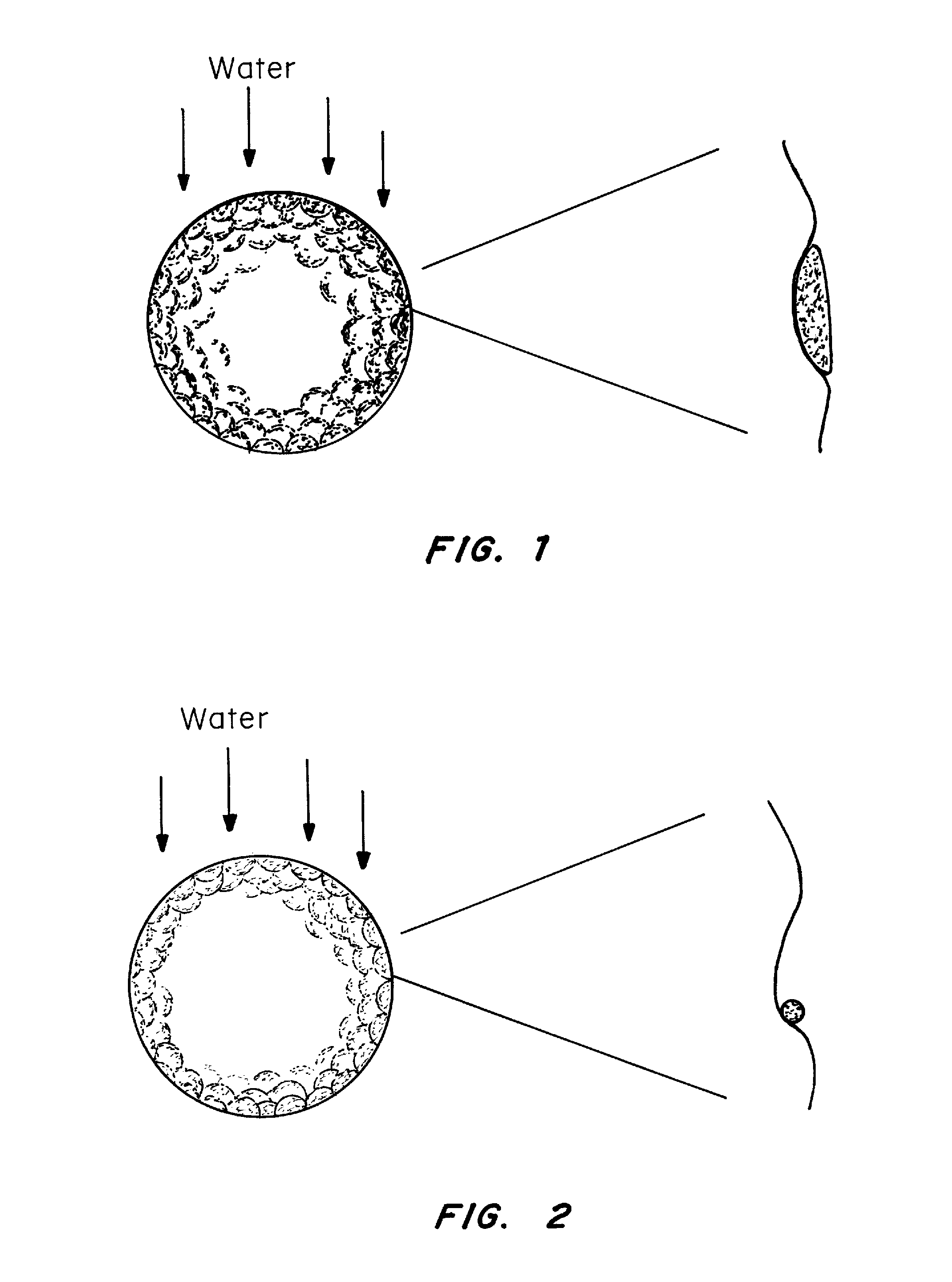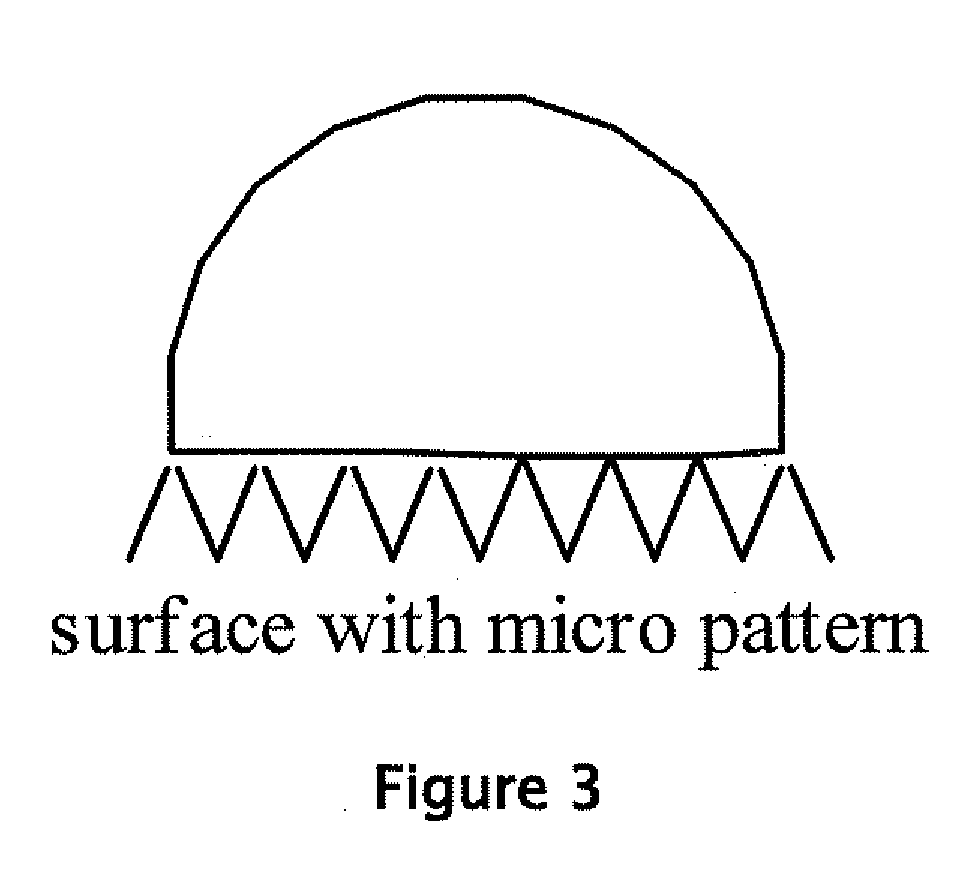Water Repellant Golf Balls Containing a Hydrophobic or Superhydrophobic Outer Layer or Coating
a golf ball and hydrophobic technology, applied in the field of golf balls, can solve the problems of less control over the distance and direction of the shot, the amount of spin the player can impart, and the ball does not travel as efficiently, so as to achieve the effect of optimal performan
- Summary
- Abstract
- Description
- Claims
- Application Information
AI Technical Summary
Benefits of technology
Problems solved by technology
Method used
Image
Examples
example 1
Preparation of Hydrophobic Golf Balls
[0054]Hydrophobic golf balls were made using the following procedure. A fluorocarbon polymer (Sartec H, available from Peachstate Labs; 3% in a fluorinated solvent), was sprayed evenly on to a golf ball using an aerosol sprayer. The solvent evaporated instantaneously and a thin white film is formed. The thin film was dried for 10 min at room temperature followed by heating with a stream of hot air from a hairdryer for 60 seconds. The heating melted the polymer resulting in the formation of a smooth transparent thin film. The coated golf ball was compared to a regular non-modified golf ball for water and mud repellency.
example 2
Evaluation of the Water and Mud Repellency of a Hydrophobic Golf Ball
[0055]Water Drop Test
[0056]The golf ball prepared in Example 1 was evaluated for water and mud repellency. Using a syringe, a drop of water was left hanging from the outlet of the syringe. On a non-modified golf ball, the water drop transferred to the ball upon contact with the ball. In contrast, on the modified golf ball, the water drop was not transferred to the ball but stayed with the syringe due to the hydrophobic surface of the golf ball.
[0057]Blowing Test
[0058]In another experiment, a drop of water was placed on top of the hydrophobic golf ball. The water drop beaded up and flew off the surface of the ball when blowing lightly on the ball. On a non-modified ball, the water drop spread into a dimple and the droplet could not be removed from the surface when blowing on it lightly, the water instead spreading evenly over a larger area of the ball.
[0059]Static Water Weight Test
[0060]A modified ball was weighed. ...
PUM
| Property | Measurement | Unit |
|---|---|---|
| thickness | aaaaa | aaaaa |
| contact angle | aaaaa | aaaaa |
| contact angle | aaaaa | aaaaa |
Abstract
Description
Claims
Application Information
 Login to View More
Login to View More - R&D
- Intellectual Property
- Life Sciences
- Materials
- Tech Scout
- Unparalleled Data Quality
- Higher Quality Content
- 60% Fewer Hallucinations
Browse by: Latest US Patents, China's latest patents, Technical Efficacy Thesaurus, Application Domain, Technology Topic, Popular Technical Reports.
© 2025 PatSnap. All rights reserved.Legal|Privacy policy|Modern Slavery Act Transparency Statement|Sitemap|About US| Contact US: help@patsnap.com



